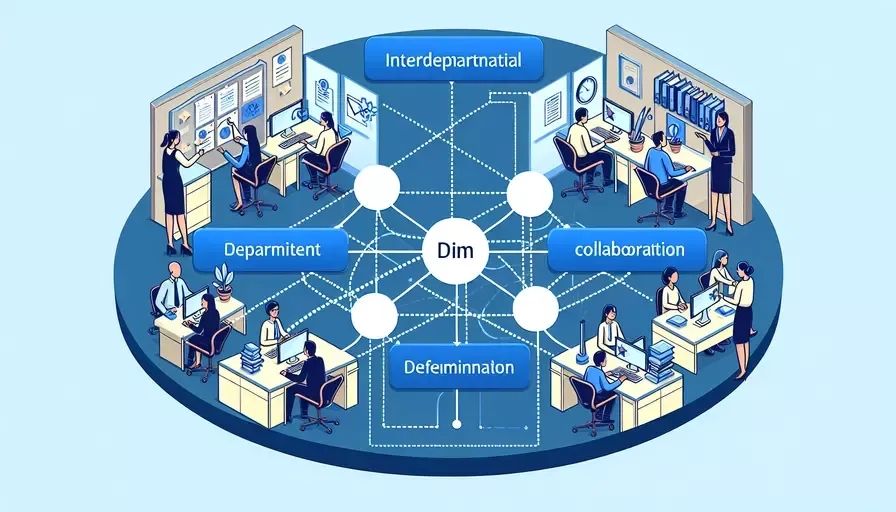The editor of Downcodes will help you understand the meaning of department collaboration and how to achieve it! In modern enterprises, departmental collaboration is crucial. It can effectively integrate resources, improve efficiency, enhance employee satisfaction, enhance corporate competitiveness, and stimulate innovation. This article will delve into the importance of departmental collaboration, how to achieve it, and related common issues, to help companies better understand and practice departmental collaboration, and ultimately maximize organizational goals.

The definition of departmental collaboration refers to the behavior of different departments within an organization working together, sharing resources, and completing specific tasks or projects together. This collaborative approach helps improve the organization's efficiency and productivity, improve employee job satisfaction and the company's competitive advantage, and improve the organization's innovation capabilities and response speed.
The main goal of departmental collaboration is to fully utilize the expertise and skills of each department to create an overall solution that meets customer needs and expectations. This requires not only communication and information sharing between departments, but more importantly, the establishment of effective working relationships to better understand and meet the needs of other departments. This collaborative approach emphasizes the whole and collaboration, rather than a single department or individual.
1. The importance of departmental collaboration
Departmental collaboration plays a vital role in modern enterprises. First, departmental collaboration can improve organizational efficiency. Through inter-departmental collaboration, the professional knowledge and skills of each department can be integrated to form a more efficient work process. This avoids duplication of work, reduces waste and improves efficiency.
Secondly, departmental collaboration can improve employee job satisfaction. When employees understand how their work impacts the entire organization, they are more motivated to improve the quality of their work. This not only improves employee job satisfaction, but also improves employee loyalty and reduces employee turnover.
Thirdly, departmental collaboration can improve the competitive advantage of enterprises. When an enterprise can integrate the resources and capabilities of various departments to form a unified and efficient work process, it can respond to market changes faster, better meet customer needs, and gain competitive advantages.
Finally, departmental collaboration can improve an organization's innovative capabilities. When employees from different departments can share information and solve problems together, they are more likely to generate new ideas and innovative solutions. This is crucial for organizations to survive and thrive in a rapidly changing market environment.
2. How to achieve departmental collaboration
Achieving departmental collaboration is not an easy task and requires organizations to change in many ways. First, organizations need to build a culture that supports collaboration. This means organizations need to encourage employees to share information, encourage them to collaborate across departments, and encourage them to respect and understand the work of other departments.
Second, organizations need to provide the appropriate tools and resources to support interdepartmental collaboration. This includes providing effective communication tools such as email, instant messaging, video conferencing, etc., as well as providing a platform for sharing files and information.
Again, organizations need to establish clear responsibilities and roles. Each department needs to understand their role in the overall project and the tasks they need to complete.
Finally, organizations need to provide appropriate training and support. Employees need to know how to work effectively in cross-departmental collaboration. They need to know how to share information, how to handle conflict, and how to build effective working relationships.
In general, department collaboration is the key for modern enterprises to improve efficiency, improve employee satisfaction, gain competitive advantages, and improve innovation capabilities. By establishing a culture that supports collaboration, providing the appropriate tools and resources, clear responsibilities and roles, and appropriate training and support, organizations can effectively achieve departmental collaboration.
1. What is departmental collaboration? Department collaboration refers to the process of cooperation and collaborative work between different departments. It involves information sharing, resource integration, and task allocation among different departments in a joint effort to achieve organizational goals.
2. What is the importance of departmental collaboration? Departmental collaboration is critical to an organization's success. It can promote the flow of information, enhance team spirit and improve work efficiency. Through inter-departmental collaboration, organizations can better address challenges and create more innovation and value.
3. How to achieve effective departmental collaboration? To achieve effective departmental collaboration, organizations can take the following steps:
Establish clear communication channels and processes to ensure timely delivery and sharing of information. Establish cross-department working groups or project teams to promote interaction and cooperation between different departments. Establish common goals and targets to encourage departments to work together to achieve overall synergy. Provide necessary training and resource support to help employees improve their ability and awareness of cross-department cooperation. Establish a positive working atmosphere and culture, encourage employees to actively participate in collaboration, and provide recognition and rewards.I hope the analysis by the editor of Downcodes can help you better understand and apply department collaboration to improve organizational efficiency and competitiveness!